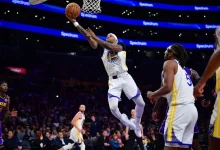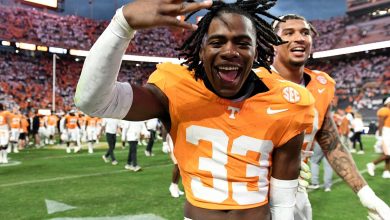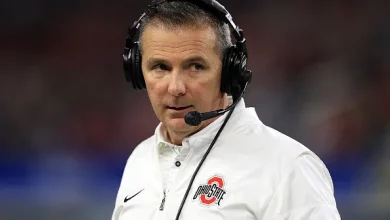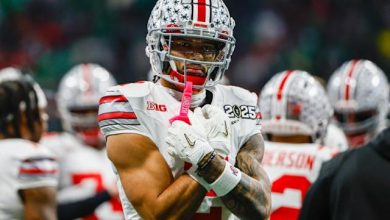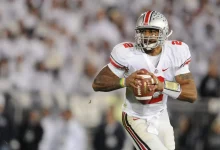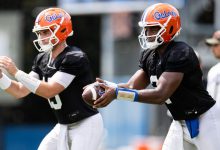An Ohio judge dismissed Terrelle Pryor’s lawsuit against Ohio State, the Big Ten, and the NCAA, ruling he isn’t entitled to retroactive NIL compensation for his college career.
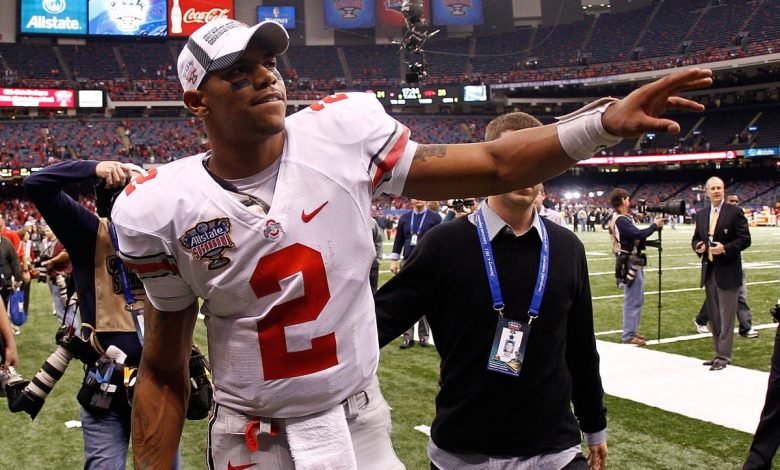
Terrelle Pryor, a former Ohio State quarterback and one of college football’s most prominent figures during his tenure, filed a lawsuit seeking retroactive compensation for his college career, alleging that he was unlawfully deprived of money through NCAA regulations that prohibit athletes from profiting from their NIL (Name, Image, Likeness) rights. Pryor’s case attracted significant attention because it challenged longstanding NCAA policies and sought to establish a legal precedent for athletes seeking compensation for their college athletic performance.
The Lawsuit and Its Core Claims
Pryor’s lawsuit contended that the NCAA, Ohio State University, and the Big Ten Conference had unlawfully deprived him of compensation related to his athletic performance during his college career. Specifically, Pryor argued that he was entitled to retroactive NIL payments—money that could have been earned through endorsements, appearances, or other commercial uses of his name and image—dating back to his time at Ohio State from 2008 to 2011.
The core legal argument revolved around the claim that NCAA restrictions on athlete compensation violated federal and state laws, including antitrust statutes, and infringed on Pryor’s rights to control and profit from his NIL. Pryor sought damages and compensation reflecting the earnings he believed he lost due to NCAA rules.
Legal Landscape Pre- and Post- NIL Legislation
For decades, NCAA policies strictly prohibited student-athletes from receiving compensation for their athletic performance, citing amateurism as the foundation of college sports. These policies aimed to preserve the amateur status of college athletes, maintaining a clear distinction between college sports and professional leagues.
However, a seismic shift occurred in 2021 when several states, including Ohio, enacted NIL legislation allowing athletes to monetize their NIL rights legally. The NCAA also updated its rules, allowing athletes to profit from endorsements and other commercial activities. This legal evolution opened the door for athletes to seek compensation for their NIL rights, but it also raised complex legal questions about retroactive payments, existing contracts, and the enforcement of NCAA rules.
The Court’s Ruling and Reasoning
In dismissing Pryor’s lawsuit, the court emphasized that Pryor’s claims lacked legal merit because the NCAA’s policies were within its authority to regulate college athletics and maintain the amateur status of student-athletes. The court underscored that NCAA rules and policies are generally considered non-justiciable under antitrust law because they are part of the NCAA’s governance structure.
Moreover, the court highlighted that Pryor’s claims for retroactive NIL payments were barred by the principle that NCAA regulations are protected under the “state-action doctrine,” which shields certain private associations’ rules from antitrust scrutiny so long as they serve to preserve the integrity of amateur athletics.
The ruling also pointed out that Pryor had voluntarily participated in college sports under the existing NCAA rules, and that any change allowing athletes to profit from NIL rights was prospective, not retroactive. Therefore, Pryor’s demand for payments covering his college years was incompatible with the legal framework.
Implications for NCAA Athletes and Future Litigation
The dismissal of Pryor’s lawsuit sends a clear message: current legal interpretations uphold the NCAA’s authority to restrict athlete compensation, and retroactive claims for NIL earnings are unlikely to succeed under existing legal standards. This ruling reinforces the idea that NCAA policies are within their rights to define the amateur status and compensation limits of student-athletes.
However, the case also highlights ongoing debates about the fairness and sustainability of the amateurism model. As NIL rights become more accepted and legislated at the state level, athletes are increasingly asserting their rights to monetize their NIL, leading to potential future legal challenges.
Broader Impact and the Future of NIL Rights
While Pryor’s lawsuit was dismissed, it underscores the evolving landscape of college athletics, where NIL rights are a hotly debated topic. The NCAA’s initial resistance to allowing athletes to profit from NIL has softened, but the legal framework remains complex. Moving forward:
- Prospective NIL Compensation: Athletes can now earn from NIL activities during and after their college careers, but retroactive payments remain contentious.
- Legal Challenges and Antitrust Scrutiny: Some legal experts argue that NCAA restrictions may still face antitrust challenges, especially if they are seen as unjustly restraining trade or violating athletes’ rights.
- State Legislation and NCAA Policies: Different states’ NIL laws can create a patchwork of regulations, complicating compliance and enforcement.
- Potential for New Litigation: Athletes or former athletes may pursue new legal actions seeking compensation for rights they believe were unfairly denied, but success remains uncertain given current legal precedents.
The dismissal of Terrelle Pryor’s lawsuit signifies a reaffirmation of the NCAA’s authority over athlete compensation policies, particularly regarding retroactive NIL payments. While this decision limits athletes’ ability to seek past earnings through legal channels, it also highlights the shifting landscape of NIL rights, which continue to evolve with legislation, court rulings, and NCAA policy changes.
As the college sports industry navigates these changes, stakeholders—including athletes, universities, and regulators—must balance the principles of amateurism with fairness and athletes’ rights to profit from their athletic endeavors. The Pryor case serves as a pivotal reference point in this ongoing dialogue, illustrating both the legal boundaries and the potential for future reforms in college sports compensation.


